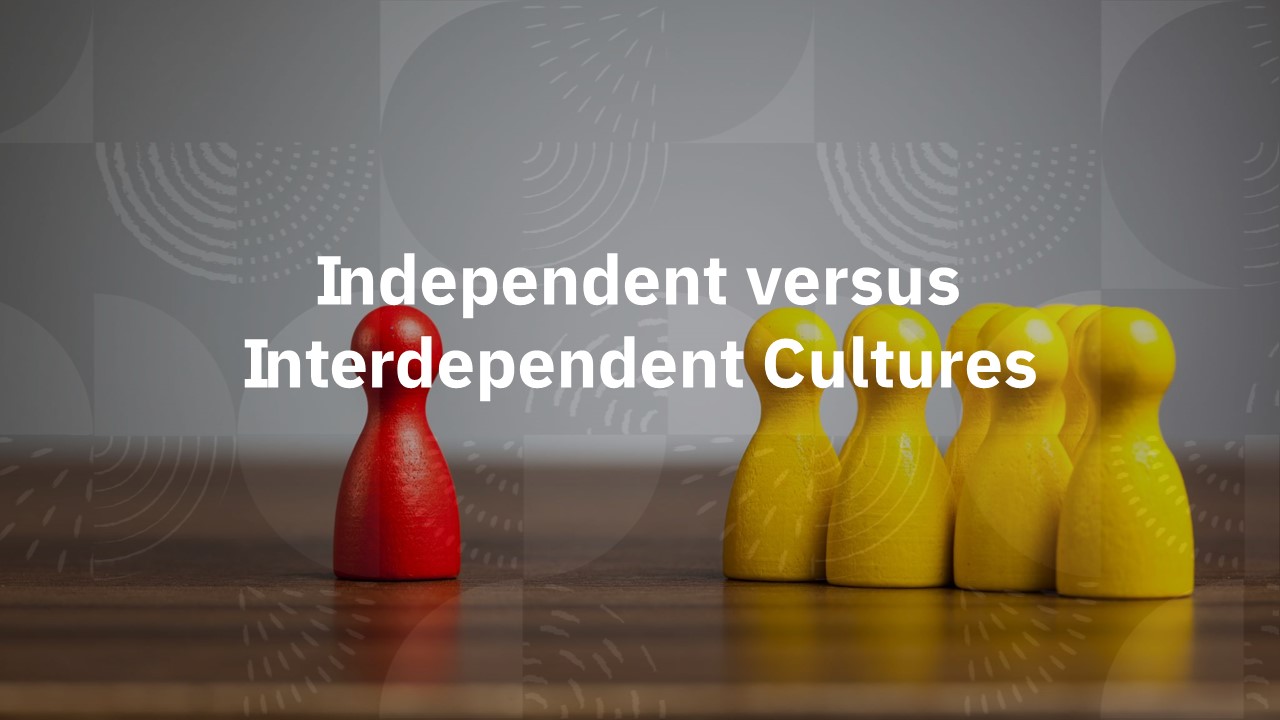The concept of interdependent and independent cultures tells us something about the internal structure of society and relationships between people, as well as how they are deemed in the mind and self of a person. These are personhood conceptions and construals of the self and others and how the self and others are related. People perceive themselves and others as interdependent or independent from each other based on their cultural values, norms, and people.
An interdependent model of culture and self characterizes Eastern societies, while an independent model of culture and self characterizes Western societies.
Western Analytical and Eastern Holistic Perception
Social perceptions of people in Eastern and Western cultures are more or less dependent on a specific context of perception. Different cultural factors can affect their perceptual and communicative processes through different cognitive mechanisms.
The perceptual processes of people in Western societies are analytical and independent of the context and details in which an object is located. People tend to see an object or a person by focusing on their salient features independently of their context.
The perceptual processes of people in Asian societies are holistic. Perceptiondepends on the full context and details in which an object is located. People tend to see an object or a person in the specific context of a situation, depending on the specifics of the situation and relations.
The social Perceptions that Are either Independent or Dependent on Context
Another study was conducted in accordance with the same idea of cultural differences in perception being interdependent or interdependent on the context (Masuda, Ellsworth, Mesquita, Leu, & Veerdonk, 2008). Researchers investigated the observers’ perceptions of emotional situations when they looked at a situation depicting a person surrounded by four other people. The European-American and Japanese participants rated the emotions of the central person, who appeared either happy, sad, or angry. The other four people, who surrounded the central person, displayed various emotions.
In such experimental situations, European-American participants estimated the emotion of the central person only by his or her facial expression. They did not take into account the emotions of other people around them. Such a characteristic of their assessment of the emotional experience of the central person is in accord with their perception of the central person independently of the context of the situation. They paid attention solely to a salient object—the central person.
In contrast to this, Japanese participants assessed the emotional experience of the central person, taking into account not only his or her facial expression but also the emotions of other people portrayed in the situation. Such a quality in their evaluation of the emotional experience of a central person corresponds with their perception, which is associated not only with the central person but also dependent on the context of the situation. They paid attention to the whole situation and the context in which the central person was.
In other experimental studies, participants assessed the emotions of a person in the context of a situation while researchers recorded the location where they looked using eye tracking. The results were similar. Americans focus mostly on the central person. In contrast to this, the Japanese and Taiwanese distributed their attention, looking not only at the central person but also at the other people in the situation.
The Western perception is independent of a situational context, and the Eastern perception is interdependent on a situational context
So, several studies demonstrated that people in Western cultures, with their perception independent of a situational context, consider the emotions of a person only from their own perspective, independent of the context. They perceive emotional experiences from an individual perspective.
People in Eastern cultures, with their perception interdependent on a situational context, perceive the emotions of a person depending on the contextual perspective and all those involved in the situation. They perceive emotional experiences from a relational perspective. In their judgment of emotions, all people who are present in a situation and their relations with each other are considered, whether they belong to the same group or are related to the person. (Masuda et al., 2008; Tsang & Wu, 2005).
Self-focused Versus Other-focused Perception and Emotions
Social perception, whether independent or interdependent on relationship contexts, is directly related to self-focused and other-focused perceptions and emotional experiences.
Studies found that individuals in Western cultures (i.e., European Americans, British people, and Germans) are characterized by prevalent self-focused perception along with corresponding emotional experiences. They are more likely than people from other cultures to experience socially disengaging emotions such as superiority, pride, anger, and frustration. They generally feel such emotional experiences as being friendly, guilty, ashamed, and connected with others less frequently and less intensely than people in Eastern cultures.
On the other hand, people in Eastern cultures (e.g., Japan, China, as well as Asian Americans) are characterized by the prevalent other-focused perception and associated emotional experiences. They tend to experience and express their emotions more frequently and intensely when they think of family members and other relationships compared to situations when they think of themselves.
They more frequently and intensely experience such socially engaging emotions as being friendly and connected with others, as well as feeling guilty and ashamed. On the other hand, they less frequently and less intensely experience such socially disengaging emotions as the feelings of being proud, superior, angry, or frustrated.
For example, Japanese tend to face situations associated with feelings of shame more frequently than Americans. On the other hand, Americans tend to encounter situations linked to anger more frequently than Japanese.
(For a review of all these studies, see Karandashev, 2021).
